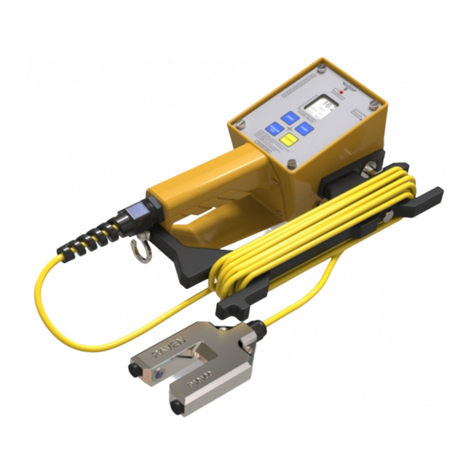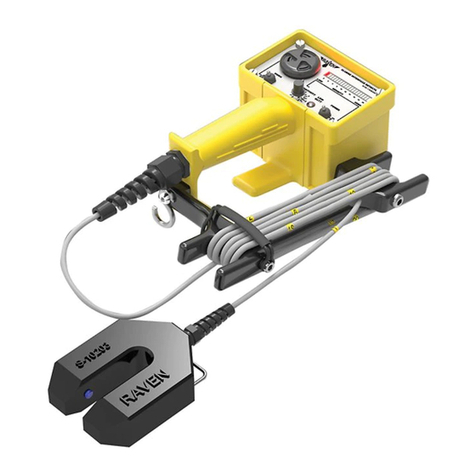
4
To prolong the life of the signal cable, avoid winding it too tightly around the
cable stowage bracket.
It is recommended when transporting the tool to support the weight of the
sensor probe. Do not allow the sensor probe to dangle from the signal cable
while transporting the tool. The sensor probe can be lodged in between the
stowage bracket and the yellow meter during transport.
Never replace less than all six batteries. The tool is most reliable when all
six batteries are replaced with new alkaline AA batteries.
Never allow the faceplate to remain unattached from the yellow meter for
more than 30 minutes. Moisture may corrode the electronics and shorten
the life of the tool. A foam gasket prevents moisture and debris from
entering the meter. The four stainless steel shoulder screws prevent
mashing of the foam gasket.
SLUDGE INTERFACE DETECTION
1. Rotate Sensitivity Knob to position [1] low sensitivity.
2. Lower the SID probe all the way to the bottom of the tank. NOTE: If needed,
increase sensitivity just enough to light up all the lightbars. THIS IS THE
SENSITIVITY BASELINE FOR THIS TANK.
3. Grasp the signal cable at the top of the railing. Using this as a reference
point, slowly raise the SID probe out of the sludge blanket until most or all of
the lightbars go out. At this level, you have detected the sludge blanket
interface.
4. The amount of cable pulled away from the reference point (top safety railing)
represents the height of the blanket from the bottom of the tank.



























